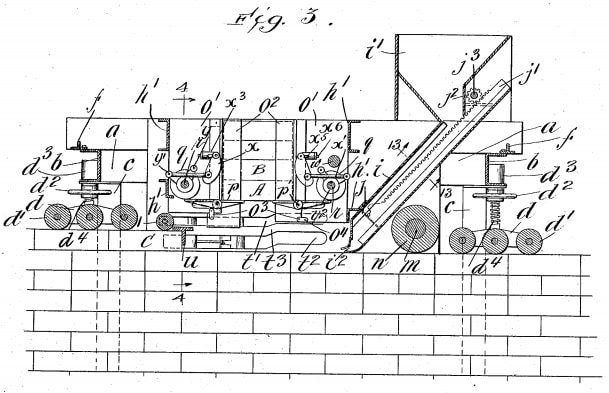
Kevin Alston
The 2025 Black History Month theme, “African Americans and Labor,” established by the Association for the Study of African American Life and History, explores the significant and multifaceted impact of the work of Black communities. From free and forced labor to skilled and unskilled professions, as well as vocational and voluntary work, Black workers, activists, and leaders have had a pivotal role in shaping the U.S. economy and its social fabric. This theme recognizes the resilience and significant contributions of Black influencers across numerous industries.
In this month’s Thought Leadership Blog, we honor Black History Month by highlighting four Black Americans who have made a significant impact on the Architecture, Engineering, and Construction (AEC) industry. From inventing groundbreaking technologies to pioneering new processes and systems, these individuals embody this year’s theme, demonstrating how Black workers have shaped and advanced this field of work. Join us as we honor their legacy and the lasting impression they have made in the AEC industry.

David N. Crosthwait Jr.
David N. Crosthwait Jr. was a distinguished African American mechanical and electrical engineer, inventor, and writer. He grew up in Kansas City, Missouri, and received a Bachelor of Science degree in mechanical engineering in 1913 and a Master of Engineering degree in 1920 from Purdue University. Crosthwait specialized in air ventilation, central air conditioning, and heat transfer systems, pioneering advancements in these fields. His innovative work led to the creation of various heating systems, refrigeration methods, temperature-regulating devices, and vacuum pumps. He held 39 U.S. patents and 80 international patents for his inventions. In the 1920s and 1930s, Crosthwait invented a vacuum pump, a boiler, and a thermostat control, all aimed at creating more effective heating systems for larger buildings. His most notable accomplishments include designing the heating systems for New York City landmarks such as the Rockefeller Center and Radio City Music Hall.

John P. Thomson
John P. Thomson invented the Automatic Brick-Making Machine, which he patented in 1892 (see drawing on the right). His innovation transformed the brick-making process, enabling masons to produce high-quality bricks faster and more efficiently than ever before. This advancement revolutionized masonry by increasing productivity and improving the consistency of brick construction. Thomson’s machine played a crucial role in the expansion of infrastructure during a time of rapid urban growth. His patent for this device was later sold for $25,000 — equivalent to several hundred thousand dollars today — a substantial sum that reflected the machine’s significance in the industry.

Archibald Alphonso Alexander
Archibald Alphonso Alexander was the first African American student at what is now known as the University of Iowa and the first African American to graduate from the university’s engineering program (1912). Despite warnings from his professors about the challenges he would encounter in finding work due to his race, Archibald Alphonso Alexander’s career advanced rapidly, leading to the establishment of Alexander & Repass, an engineering firm, with his colleague Maurice Repass. Their firm specialized in the construction of bridges and viaducts, undertaking numerous projects in Washington, DC, including the Tidal Basin Bridge and Seawall on the National Mall. Alexander & Repass was notable for hiring both white and black workers, who worked together in mixed work crews, which was almost unheard of at that time in American history. The Tidal Basin Bridge and Seawall cost $1 million to build, and the construction employed over 160 workers. Over his career, Alexander oversaw more than 300 projects, earning his firm recognition from Ebony magazine as “the nation’s most famous interracial business.”

Hattie Scott Peterson
Hattie Scott Peterson was the first African American woman to become a licensed civil engineer in the United States. Her illustrious career spanned various significant projects, including the construction of the Alaska Highway and numerous military construction endeavors during World War II, showcasing her remarkable skills and dedication to her field. Peterson’s career achievements are a testament to her pioneering spirit and expertise. Initially working in the U.S. Government Accounting Office during World War II, she audited government contracts, laying the groundwork for her future endeavors. In 1947, Peterson began her tenure as a surveying and cartographic engineer for the U.S. Geological Survey (USGS), further solidifying her role in the engineering field. Her groundbreaking career continued in 1954 when she joined the U.S. Army Corps of Engineers (USACE), becoming the first female engineer in the organization and focusing her efforts on flood risk reduction.
These four individuals exemplify the ingenuity, perseverance, and leadership that have shaped today’s AEC industry. From groundbreaking inventions to innovative engineering solutions, their stories highlight the essential role Black Americans have played in advancing this field. As we celebrate Black History Month and reflect on this year’s theme, African Americans and Labor, it is important to recognize not only their past achievements but also the ongoing contributions of Black professionals in architecture, engineering, and construction. By honoring their legacies, we continue to foster an industry that values innovation, excellence, and diversity.